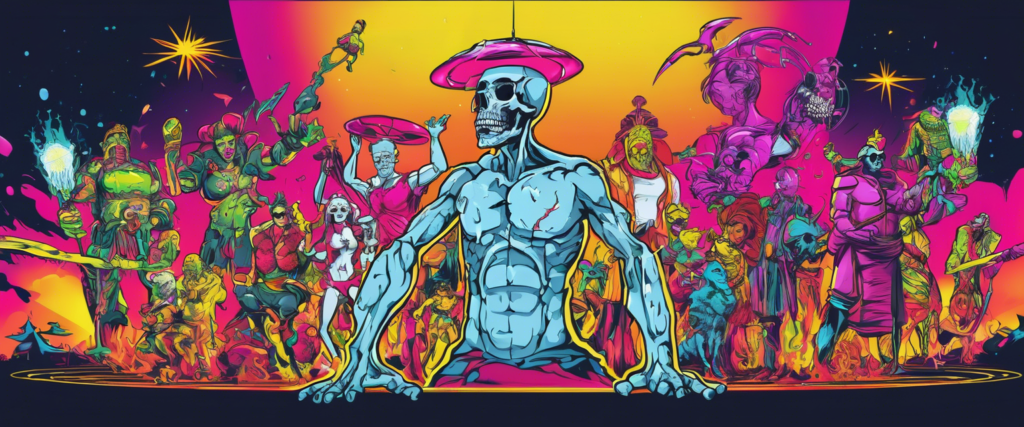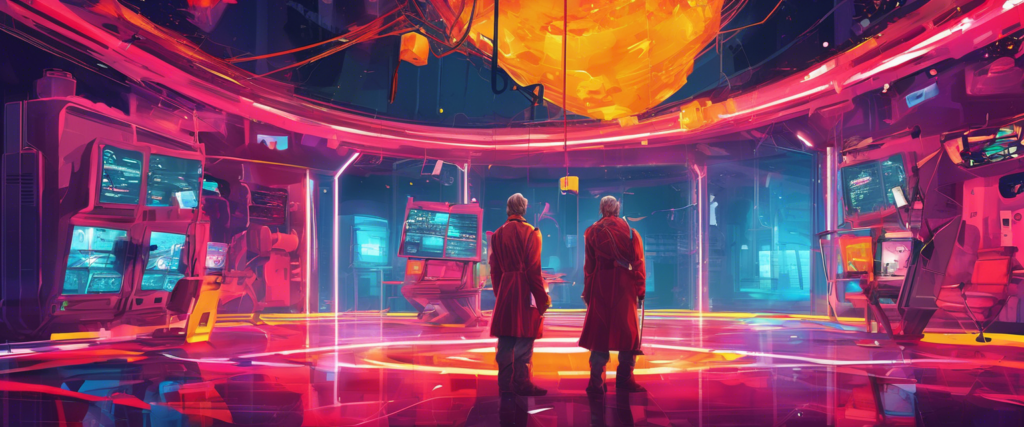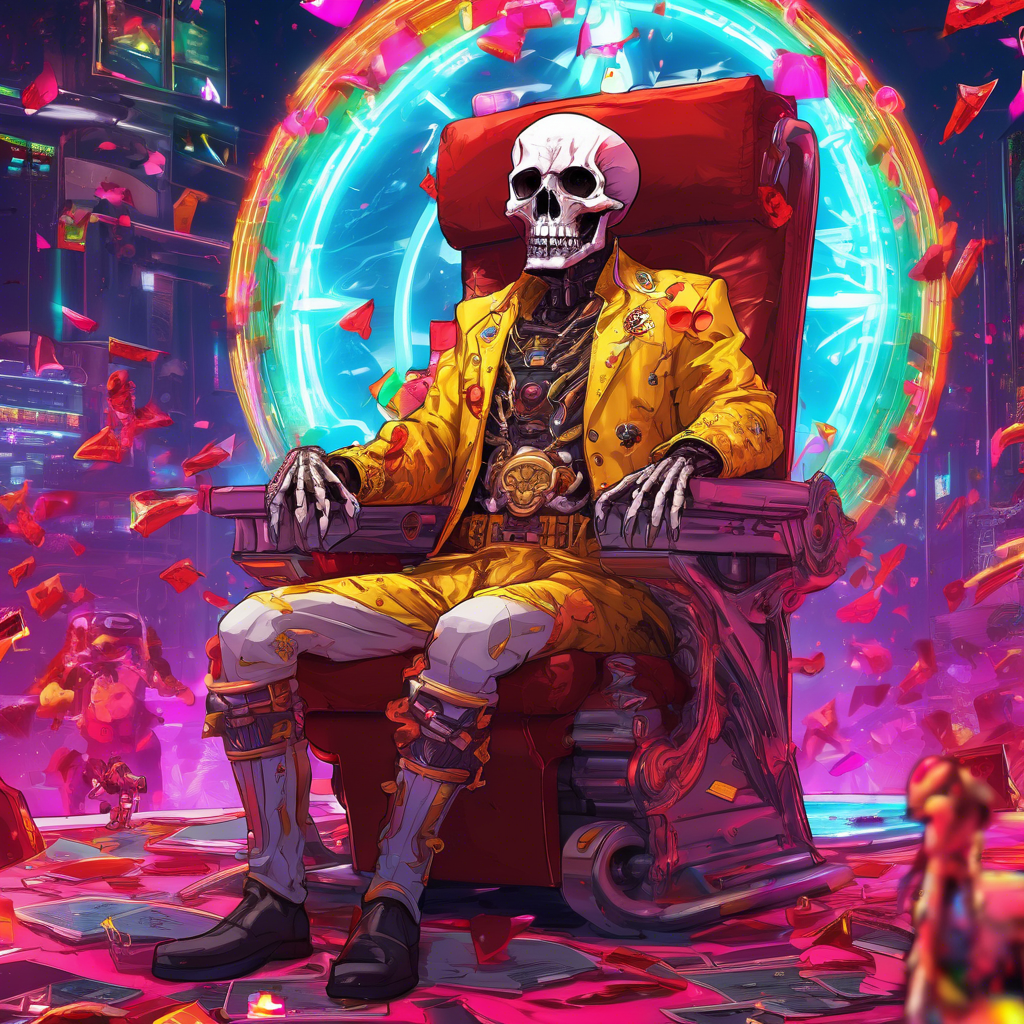Science fiction has always been a mirror and a map, reflecting our ambitions while charting their risks. In Richard K. Morgan’s Altered Carbon, Takeshi Kovacs prowls a neon-drenched future where the wealthy, known as Methuselahs, cheat death by slipping their digitized minds into new bodies, their consciousness preserved in cortical “stacks.”
Robert A. Heinlein’s Methuselah’s Children, written in 1962, gave us Lazarus Long, a man engineered for centuries of life, his story a bittersweet meditation on outliving the world he knew. These tales aren’t just entertainment; they’re warnings. Now, billionaires like Jeff Bezos, Bryan Johnson, and Peter Thiel are turning those fictions into blueprints, pouring fortunes into life-extension tech, cellular reprogramming, cryonics, anti-aging cocktails. The promise is intoxicating: a life stretched beyond the century mark, a body defying decay.
But as we reach for the stars, a shadow looms, cognitive decline, the silent saboteur that could turn immortality into a curse. If we push lifespan too far without mastering the mind, we might not get the utopia so desired, but a dystopia where the body endures and the self dissolves.
The Glitter of Longevity
The allure of eternal life is addictive, a sci-fi fantasy breaking into reality. In Altered Carbon, the Methuselahs revel in their power, their wealth buying them endless “sleeves”, bodies tailored to their whims. Easily replaceable and customisable for any need they might have. Heinlein’s Lazarus Long, born from selective breeding, clocks centuries with a rugged charm, his vitality a testament to human potential. Today’s elite attempt to mimic these archetypes with seemingly endless cash and cutting-edge science.
Bryan Johnson’s “Blueprint” project sees him trialing supplements and therapies, monitoring biomarkers, and claiming to rewind his biological clock. Jeff Bezos backs Altos Labs, a biotech venture chasing cellular rejuvenation, turning old cells young again, while Peter Thiel bankrolls Unity Biotechnology to zap aging’s cellular culprits. Cryonics outfits like Alcor freeze the hopeful, banking on future revivals. It’s a heady vision: a world where death becomes optional, a privilege for those who can pay.
“The Machinery of Justice will not serve you here—it is slow and cold, and it is theirs.”
Richard K. Morgan, Altered Carbon
But the surface shimmer hides cracks. Extending life isn’t just about keeping the heart ticking; it’s about preserving what makes us us. In Morgan’s world, the tech assumes a mind can be ported like software, neat, clean, eternal. Heinlein’s Lazarus, though, carries the weight of time, his longevity laced with melancholy. Real-world science lags behind both. Physical decline can often be managed, pacemakers, transplants, gene therapies, but the brain’s decay is a tougher beast.
Alzheimer’s, the seventh leading cause of death globally, strikes millions, while subtler cognitive fades hobble countless more. The billionaires might dodge wrinkles and weak knees, but can they dodge the fog that creeps into the mind? Without that answer, their quest risks building a gilded cage, a Methuselah’s shell with no soul inside.
The Brain’s Fragile Tune
The mind isn’t a machine we can overhaul; it’s organic matter that falters with age. In Altered Carbon, Kovacs’ enemies rely on flawless stack tech, their consciousness rebooted without a hitch. Heinlein’s Lazarus, though, hints at the toll, his wit endures, but his endless years breed isolation, a subtle erosion of connection. Science tells us the brain’s decline is relentless: amyloid plaques and tau tangles clog neural pathways, inflammation flares, blood flow dwindles.
Neurons die, and the brain’s plasticity, its knack for rewiring, stiffens. It’s not about running out of space, as if we’re hard drives hitting capacity; it’s about the hardware glitching, the software crashing. One in three seniors dies with dementia, per US stats, and many more lose enough sharpness to stumble into physical ruin, pneumonia or falls claiming bodies the mind can’t protect.
“I’ve lived too long already. I’ve seen too much and done too much. I’m worn out—not physically, but in spirit. Maybe I’ve just seen too many summers—or too many faces that I didn’t want to see again.”
Robert A. Heinlein, Methuselah’s Children
This isn’t a side issue; it’s the crux. Life extension’s cheerleaders imagine Kovacs-like clarity at 200, but without a fix for cognitive decay, they’re more likely to echo Lazarus’ weariness, or worse, a hollowed-out shell. Biotech’s trying: Altos Labs probes cellular resets that might perk up brain cells; rapamycin, a drug from Easter Island bacteria, slows aging in mice, hinting at neural benefits.
Neuralink’s brain-computer interfaces tease a future where tech could prop up fading minds alongside augmented bodies. Yet these are whispers, not symphonies. The brain’s complexity dwarfs the body’s, billions of neurons, trillions of connections, a dance we barely understand. Push lifespan too far, and we might get a legion of ageless bodies with minds stuck in a discordant loop, a hydrogen sonata played on broken strings.

The Weight of Immortal Elites
The effect of people with extreme longevity could reshape society. Morgan’s Methuselahs lord over a fractured world, their immortality amplifying inequality, wealth buys time, time buys power. Heinlein’s Lazarus watches civilizations stagnate under long-lived rulers too entrenched to yield. Now imagine a real-world 200-year-old Bezos, body pristine, mind a patchwork of forgotten deals and faces.
Or a Thiel, steering markets with a brain half-lost to tau tangles. If only the rich can afford life extension, they’ll hoard not just years but influence, leaving the rest of us to age and fade. It’s not just their tragedy, it’s a societal anchor, a class of eternal elders dragging progress into a Methuselah mire. In such a situation, society would stagnate, progress slow and enter a period of ossification.
“The trouble with immortality—or extreme longevity, at any rate—is that you end up with a ruling class that has no fear of death, and thus no real stake in the future.”
Iain M. Banks, Matter (paraphrased for fit, inspired by Banks’ themes)
The numbers back this dystopia. Global wealth gaps are already stark, 1% owning half the global wealth and more then 95% of the rest of humanity, and longevity tech could widen this gap. A lucid immortal elite might innovate, like Banks’ Culture Minds, but a half-lucid one? Picture boardrooms of decayed tycoons, clinging to outdated ideas, their decisions muddled by cognitive rust.
In Altered Carbon, the Meths’ boredom breeds cruelty; in Methuselah’s Children, Lazarus’ longevity breeds detachment. Here, it could breed stasis, a world where the young can’t rise because the old won’t leave. The matter of life extension isn’t just personal; it’s a collective burden, a weight that could crush the future under the guise of saving it.
A Cautionary Horizon
So, what are we really chasing? Morgan’s Kovacs thrives in a world where tech solves all, but our reality’s messier, no stacks, no sleeves, just hope and hubris. Heinlein’s Lazarus endures, but his tale warns that longevity is a double-edged sword, cutting deeper the longer it swings. The billionaires might crack it, neural regeneration, AI-augmented cognition, a brain as spry as a lab-grown liver. Until then, we’re gambling with a nightmare: bodies that outlast minds, a Methuselah class ruling from fog-shrouded penthouses. Banks’ Culture novels offer a utopia where tech lifts all; our path risks a dystopia where it lifts only a few, and half-broken ones at that.
“The danger is in acting without thinking; the tragedy is in thinking without acting. We see the past through a glass darkly, we see the future not at all.”
Iain M. Banks, Look to Windward (adapted slightly for context)
Nature’s clock, cruel as it is, levels us all; tamper with it too recklessly, and we trade equality for entropy. Extending life sounds like triumph, but if the mind can’t match, it’s a hollow victory, a sci-fi caution we’re living out in slow motion. The dream of endless orbit is seductive, but without a clear-headed crew, it’s just a drifting husk.
Conclusion
Science fiction’s gift is foresight, and Altered Carbon and Methuselah’s Children light the risks of outrunning our own biology. Takeshi Kovacs’ Methuselahs and Lazarus Long’s long haul show life extension’s promise and peril, power and purpose stretched thin by time. Today’s billionaires chase that horizon, their wealth fueling a race against decay. But cognitive decline looms like a rogue wave, threatening to swamp the ship.
We can’t ignore it: a mind that falters turns immortality into a prison, a society of faded elites into a cage for us all. The tech might catch up, someday. For now, we’d do well to pause, weigh the cost, and ask if endless years are worth it if we lose ourselves along the way. The stars can wait; our humanity can’t.

Factoid: Methuselah was a biblical patriarch and a figure in Judaism, Christianity, and Islam. He is claimed to have lived the longest life, dying at 969 years of age. Some believe that Methuselah’s age is the result of a mistranslation, while others believe that his age is used to give the impression that part of Genesis takes place in a very distant past. Methuselah’s name has become synonymous with longevity.


